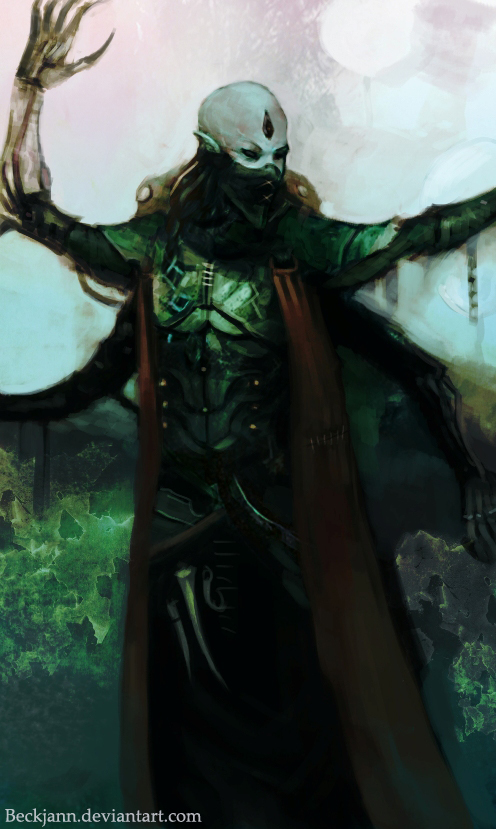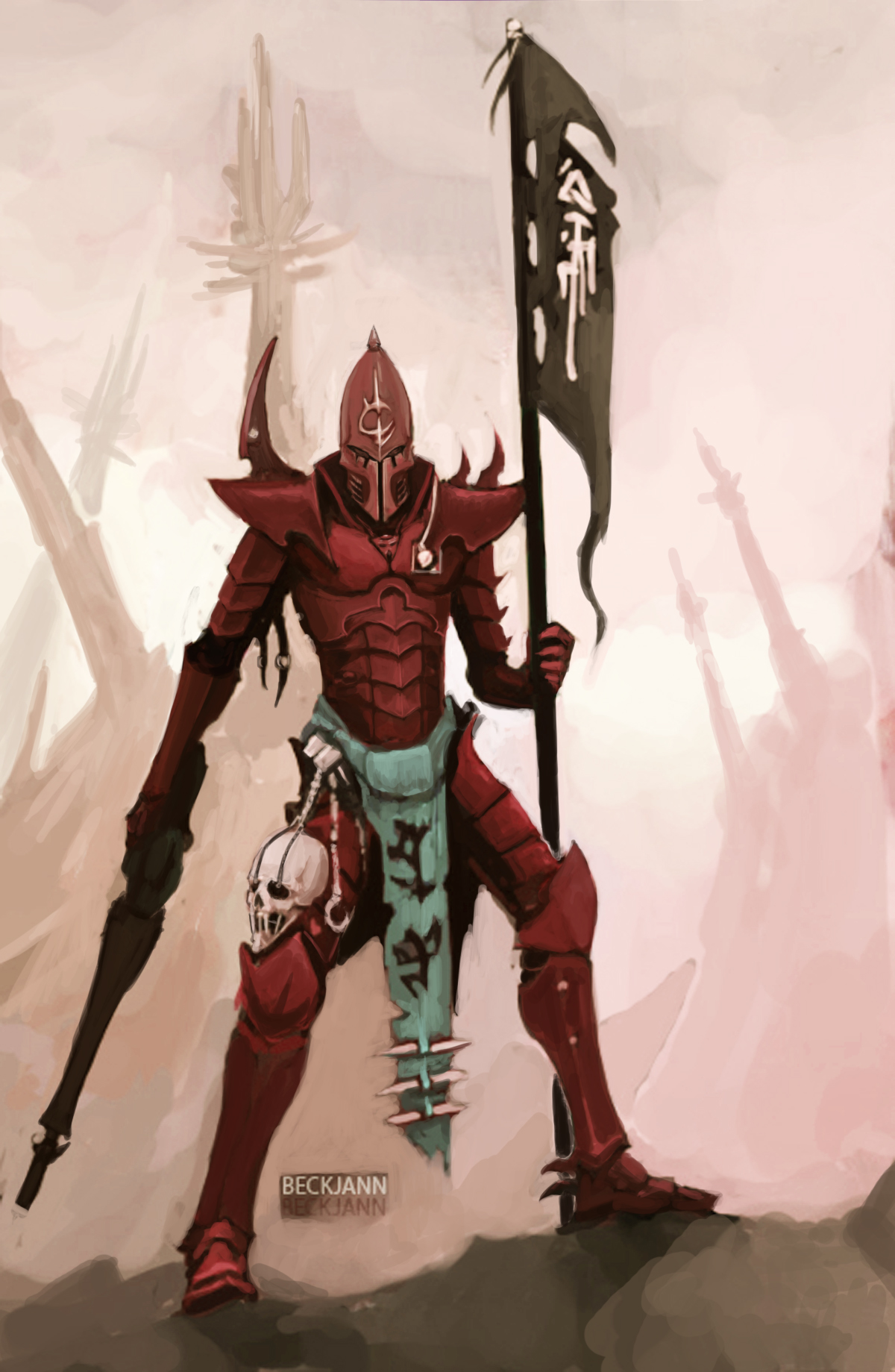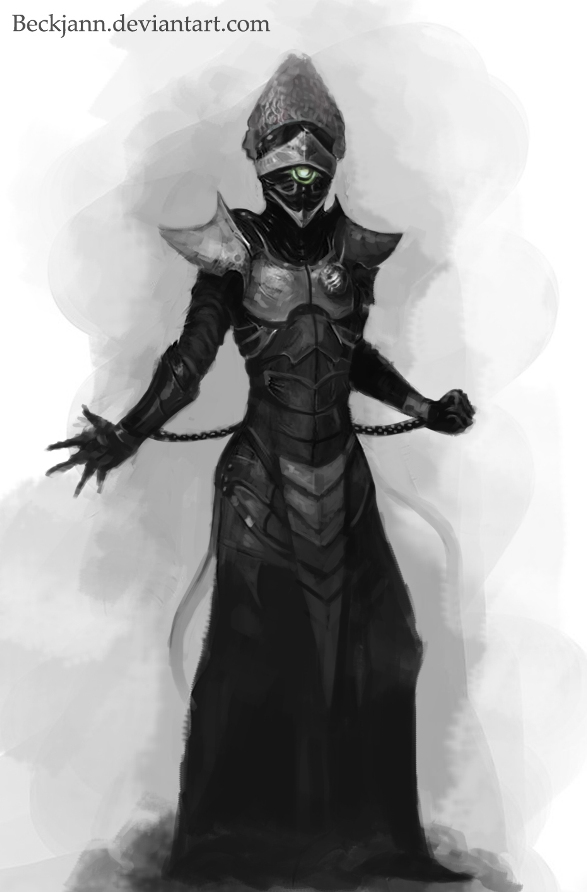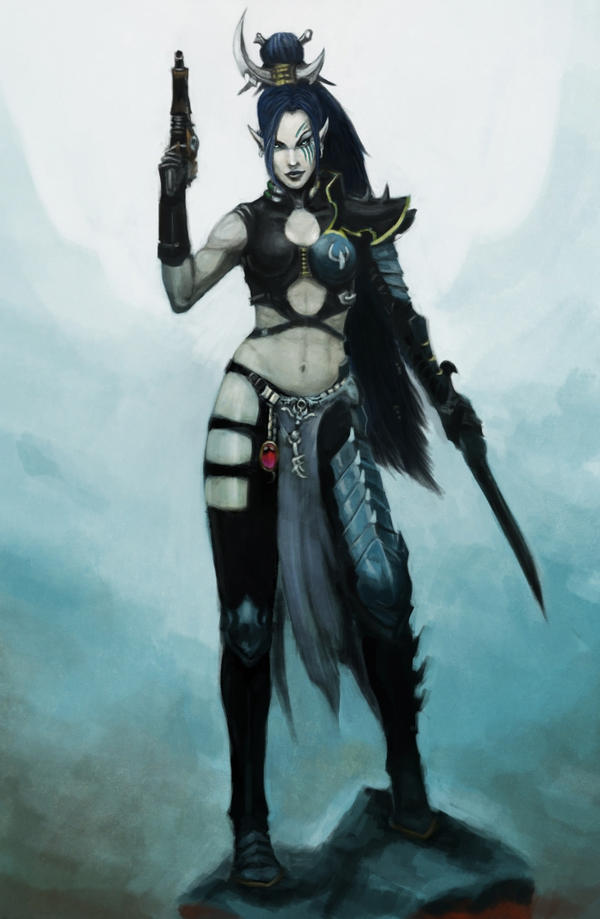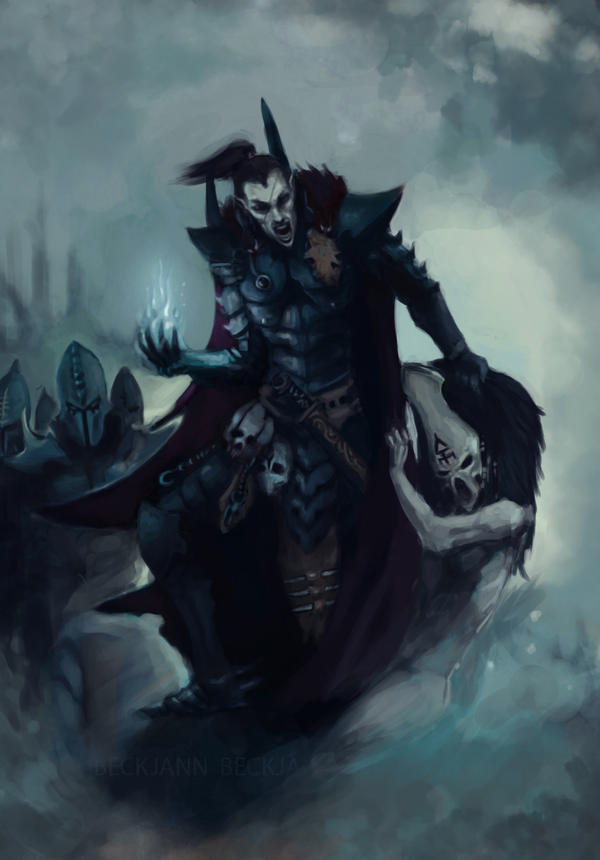Thunderstomp presents: Dark Streets of Commoragh!
Dark Streets
Battle for supremacy in the Dark City of Commoragh
In Dark Streets all players take control of a minor character in a Kabal, trying to prove they are worthy and cunning enough to advance up into the Kabal’s hierarchy.
Dark Streets is a set of home-made rules designed to allow players to field a small gang of Dark Eldar fighters and try and become the biggest, baddest, and meanest Dark Eldar Lord in all of Commoragh. Have you ever wanted to know what it takes to become the Archon of a powerful Kabal? Or would you rather be the Queen of the Arena and head of your own Cult? This is your chance to prove you are the top Dark Eldar player in your area.
Each player starts by creating a small force from the Dark Eldar codex and proceeds to play different kinds of missions. After every mission a Force earns Renown, which over time can be ‘exchanged’ for different upgrades. Think of Renown as experience points and you will not be far off. The better you do each game the more well-known your Kabal will be and the more it will be feared. And that’s what it’s all about, right?
The purpose of these rules is to provide gamers a simple framework for running a Dark Streets campaign. The main reason to do this is because it’s just great fun designing and building a gang of ruthless Dark Eldar fighters and then watching this posse of villains battle it out and fight to become the greatest Kabal in the Webway. Secondly it’s a great way to get started with a Dark Eldar army because you only need a small amount of models to get started and, as the campaign progresses, you’ll be able to add to your force slowly. Lastly, it shows you what else you can do with the 40K rules with a bit of imagination and a will to look outside the box.
The rules are based on the normal 5th edition 40K rules with some ideas taken from the GW classic Necromunda. The end result is something completely new, yet at the same time familiar to veteran 40K players.
Terrain rules:
Every table should be filled with 25%-33% of buildings. As all scenarios take place in the city of Commoragh, these aren’t ruins as such, but mostly intact buildings. As such, the following special rules apply to these sections of terrain.
Infantry, monstrous creatures and beasts will never need to roll for difficult terrain while inside buildings. They can always move their full movement as though they are in open terrain.
Jump Infantry and Jetbikes will only ever need to take one difficult terrain test while moving in, out or through any number of buildings. With the table being so clustered, it can happen a fast model would have to take a large number of tests, so we’ve capped the tests at 1 per movement phase.
Vehicles cannot enter buildings. No vehicle can move through or over any building, nor can they end their movement on top of a building. They are too high for a vehicle to do so.
Buildings provide a 4+ cover save in the same way as normal terrain would. Units can shoot through buildings at units on the other side, provided they have line of sight as normal.
The rest of the table should be set up with terrain as normal.
 |
| A real Dark Eldar! Run! |
For some battles you will use a special type of terrain called a Portal. After setting up the table but before determining deployment zones, players should put down two portals on the board. These can be placed anywhere on the board, but not within 18” of each other. For game purposes these portals count as being connected. Any model who moves into contact with any edge of one portal can continue his movement from any edge of the other portal. Vehicles can never move through Portals (they are too big!), but all other model types can.
Here is an example of how the terrain can be set up. The grey areas are Buildings. The red areas are normal terrain features (of your choosing) and the blue area is a road. As you can see there is a large amount of terrain, and yes, that is the point!
Force selection:
Before you can go to battle you will need to select a cadre of warriors who will fight for you. You will hire the most ruthless and efficient fighters for your force in an attempt to come out ahead of your competitors.
Each player can make a normal 500 point army as his starting force. Each player uses the Dark Eldar Codex to choose his force. The following restrictions apply (the normal Force Organisation Chart is ignored):
1 HQ, 2 Troops, 0-1 Elites, 0-1 Fast Attack, 0-1 Heavy Support.
As you can see this is fairly restrictive. As you play more battles you force will grow and you will be able to get more and different units. All normal rules apply when making a Dark Streets force, so special characters can be taken (if you must ;) ), as can any upgrades and Transports.
Battles:
The point of this game is to prove that you are the best Dark Eldar leader in Commoragh and to do this you have to show that you can defeat any opponent. However, you are not at war with your competition and there is no need for a scrap between competitors to devolve into a full blown war. This would only alert your Kabal superiors and force them to devote precious resources to settling a dispute that you started. This, and it’s not even certain the upper echelon of the Kabal deems you worthy enough to back up, would invariably mean you would have to face punishment for forcing your Kabal into a war they did not want in the first place. And no one likes being punished by a Kabal.
As such all conflicts that are fought between you and your opponent are merely designed to inflict the first casualties before bidding a well-timed retreat. Once you have landed the first blow you have proven to be the better warrior and it is time to retreat.
This scenario is played on a table 48” by 48”, using the terrain rules as described. Also use the Portal rules.
Deployment zones are two opposite quarters, each 12” by 12”. Players deploy their armies per the normal rules.
Armies: Both players use all the forces they have available. Determine the total points value of your entire force, remembering to deduct points for any individual models that aren’t fighting (due to injuries).
Objective: Destroy one enemy unit completely. If a unit flees off the table it counts as destroyed for the purpose of this Objective.
Victory: Whoever reaches the Battle’s objective and moves all of his own units off the table via any edge in his deployment zone wins the game. The game ends as soon as, having reached the Objective, one player manages to move the last of his models off the table, or the last of his models dies while there are still opposing models on the table. Note that it is perfectly possible for both players to reach the Objective, but there can only be one winner. In the unlikely event both players simultaneously lose their final model, the game ends in a draw.
Post-Battle Sequence:
The Post Battle Sequence is divided into three different parts. First players roll for any injuries that models might have suffered. Next they determine how much renown they have earned from this battle. Finally they can upgrade units if they have enough renown.
Injuries: Models who would be considered dead in a normal game of 40K aren’t necessarily dead in a game of Dark Streets. While they were incapacitated and couldn’t fight in the battle anymore, they might not be dead. After the battle is finished, roll a D6 for each individual model that was dead. Vehicles are rolled for if they were either Destroyed or Wrecked. This is called a Recovery roll.
On a roll of 1-2 they suffer some sort of effect. Roll a further D6 on the Serious Injury table below.
On a roll of 3-6 they only suffered minor injuries and are considered healthy enough to fight in the next battle.
Serious Injury table:
1) Dead – The model is dead or completely wrecked. Cross him off your army list
2) Incapacitated – Model missed next battle
3) Succumb to the Pain – Roll a D6 for the model at the start of each of your turns in the next battle only. On a roll of 1 the model succumbs to the pain and counts as dead. They will need to make a recovery roll if they succumb to the pain. Vehicles count as suffering a Weapon Destroyed result if they succumb to the pain. This means that vehicles can suffer more than one succumb to the pain damage result.
4) Biting down the Pain – The model can, once in the next battle, reroll one failed to hit roll, either in combat or with shooting. Only that individual model may use the reroll.
5) Impressive Scars – the model’s unit gains +D3 Renown
6) Embracing the Pain – The model starts the next battle with an additional Pain Token (this obviously is a benefit to his whole unit). Vehicles count as having the Stealth special rule for the next battle only.
Note that every model is counted as an individual for the purpose of these rolls. So if you lose the Warrior carrying the Blaster for one battle, he cannot hand over the Blaster to another member of his squad. He’d never part with such a precious weapon!
As you can see, chances are fairly slim a model dies after fighting a battle and a model stands as big a chance of something good happening as it does of something bad happening. This is entirely intentional. Buying back models is costly and not something easily done, so it figures it shouldn’t be too easy for a model to die as well.
Renown: Renown is earned for fighting in battles and proving you are better than everyone else. It represents how well-known you are. The higher your renown, the better your reputation is. As you become more well-known, you can acquire more and better equipment, as well as more fighters.
Renown is earned as follows after each game:
+D3 for each unit participating in the game
+D3 for the Gang Pool of the winning player
+D3 for the Gang Pool of each player who reached the Objective
+D3 for the unit who reached the Objective
If a unit fled off the table, the unit receives a -1 penalty to its renown for this battle
If there was a difference between the total point values of the two armies, the player receives bonus points to his Gang Pool equal to 10% of the difference. So if player A had an army value of 589 and player B had a value of 523, player B would receive (589-523=56 à 10% of 56 = 5.6 à 6) 6 points of Renown in his Gang Pool.
Note that Dedicated Transports do not earn Renown for themselves. Any Renown they do earn goes into the Gang Pool. See Progression below for details.
Progression: This is the part where you can upgrade your gang and really improve your standings. As mentioned above, individual units earn Renown after each battle. There is also a separate pool of renown, known as the Gang Pool. These Renown points are used to upgrade individual units by either expanding the number of models in a unit, by buying more equipment, or by changing the whole unit to something else! Let’s take a look at these three options.
New Members: Any unit with sufficient Renown can buy an extra member in this part of the Post Battle sequence. Each point of Renown equals one point in the Codex. So if you wanted to add another Wych to a unit of 5 Wyches, you would have to spend 10 of that unit’s Renown. Remember that normal Codex rules still apply, so if those 5 original Wyches had Haywire Grenades, you would have to buy those for the new Wych as well, spending 12 Renown instead of 10. Once you’ve spent Renown, you obviously deduct if from that Unit’s Renown pool. As Renown counts as points in the Codex, your total army value will increase the more Renown you spend.
New Equipment: Any unit may be upgraded with new equipment as per the normal rules in the Codex. The unit of 5 Wyches mentioned above could be upgraded with Hydra Gauntlets (if they didn’t have Wych Weapons already) by paying 10 Renown. In the same vein, you could choose to upgrade one Wych to a Hekatrix for 10 Renown. If you wanted to give the Hekatrix a Blast Pistol, you would have to spend an additional 15 Renown. It is also possible to, for instance, upgrade a Hekatrix’ Venom Blade to a Power Weapon. This would only cost 5 Renown (the Venom Blade already costs 5 points, while the Power Weapon costs 10).
Change Unit: Units as a whole can become better versions of themselves if they have earned enough Renown. This represents actual experience, more training, better equipment, and sometimes even forms of surgery! Each type of model has a place in one of the upgrade tables below. A unit can choose any of the available paths and change its unit type accordingly. Renown has to be spent to make up the difference. If we look up Wyches in the table below, we see they can be upgraded to Bloodbrides, Hellions or Reavers. This represents them advancing their Arena Career or choosing to leave the Arena Culture altogether. Our unit of 6 Wyches, with Hydra Gauntlets and a Hekatrix with a Power Weapon, would have to pay 18 points of Renown to be upgraded to a unit of 6 Bloodbrides, with one set of Hydra Gauntlets and a Syren with a Power Weapon. Basically what you do is calculate the number of points of the unit you want your old unit to turn into, subtract the points of your old unit, and make up the difference in points by paying for it with Renown. While you can sell or buy equipment as you want, you always need to keep the number of models the same! You cannot take a unit of 6 Wyches and turn them into a unit of 3 Reavers. Either they all go, or no one goes!
Only the worthy: While everyone aspires to become the best they can be, not everyone can change their unit whenever they want. They have to prove their worth in addition to having enough Renown. To represent this every unit wanting to move to the next step in their advancement table must meet the following criteria:
- The unit must have access to enough Renown to pay for the upgrade
- The unit must have reached the Objective in the previous battle
- They must roll a 6 on a D6, adding +1 for every Objective they have met since the last time they advanced.
For example: our unit of 6 Wyches has managed to reach the objective in the past two games and have now earned enough Renown to upgrade themselves to a unit of 6 Bloodbrides. Since they have reached the Objective in the last battle and they have access to enough Renown they can now attempt an Advance roll to see if they can make the transformation. They have to roll a 6 to be successful, adding a +2 modifier because they have reached 2 Objectives in all the previous games. Should they make the roll they would start counting the number of Objectives from 0 again.
Gang Pool: As mentioned there is also a separate pool of Renown called the Gang Pool. Renown in the Gang Pool can be spent on all different units in the army. In effect it is common pool available to every unit in the army to make up shortages in Renown.
Additionally, any upgrades you want to buy for any Dedicated Transports come from this pool. Any Renown earned by Dedicated Transports goes into this pool. Dedicated Transports are an exception to the normal rule that individual units earn Renown for themselves.
Taking the Credit: While you fight with an entire army, there is only one real leader. Being a true Dark Eldar, your army’s leader is not above taking credit for what his subjects have achieved. As such, a player can transfer Renown from any of his units (excluding the Gang Pool) to any of his HQ choices, on a 2:1 basis. Besides fitting with an arrogant leader, this also helps to pay for the more expensive upgrades HQs have access to.
Buying back dead models:
Should a model die (or be completely wrecked in the case of vehicles) after making a Serious Injury roll, they can be bought back by spending renown. The cost in Renown depends on the model’s cost in points.
| Points cost | Renown Cost | | Venom | D6x3 |
| 0-12 | D6+1 | | Raider | D6x3 |
| 13-20 | D6+2 | | Talos / Cronos | D6x4 |
| 21-30 | D6+3 | | Ravager | D6x5 |
| 30+ | D6+4 | | Flyers | D6x6 |
In addition, all newly bought replacements automatically miss the next battle as they need time to hook up with the player’s gang.
Upgrade Tables:
| 1) | Wyches | | | | | |
| 2) | Blood Brides | Reavers | Hellions | Beastmasters | Wracks | |
| 3) | Syrens | | Helliarch | | Grotesques | Acotyst |
| 4) | Succubus | | Baron | | Abberation | Haemonculus |
| 5) | Lelith | | | | Cronus | Ancient |
| 6) | | | | | Talos | Urien |
Wyches can choose to upgrade to any of the unit types of step 2)
Once they have chosen a step 2), they follow that path down as far as they can. They cannot move sideways or up. The exception to this is a unit Wracks. They can chose to become either Grotesques or one can be upgrade to an Acotyst.
Single model upgrades are really just upgrades for single models. Only one model can become a Syren, and only that Syren can become a Succubus.
Once a unit/model has reached the lowest step in the table, they cannot be upgraded further.
| 1) | Warriors | | | | |
| 2) | Trueborn | | Scourges | Wracks | |
| 3) | Dracon | | Solarite | Grotesques | Acotyst |
| 4) | Archon | Duke | | Abberation | Haemonculus |
| 5) | Vect / Malys | | | Cronus | Ancient |
| 6) | | | | Talos | Urien |
Warriors can choose to upgrade to any of the unit types of step 2)
Once they have chosen a step 2), they follow that path down as far as they can. They cannot move sideways or up. The exceptions to this are Wracks and a Dracon. Wracks can chose to become either Grotesques or one can be upgrade to an Acotyst. A Dracon can choose to become an Archon or the Duke.
Single model upgrades are really just upgrades for single models. Only one model can become a Dracon, and only that Dracon can become a Succubus.
Once a unit/model has reached the lowest step in the table, they cannot be upgraded further.
| 1) | Venom | | Mandrake | Incubus |
| 2) | Raider | | Fiend | Klaivex |
| 3) | Ravager | | Decapitator | Drazhar |
| 4) | Razorwing | Voidraven | | |
A Ravager can choose to be upgraded to a Razorwing or a Voidraven.
And that’s it! All the rules needed to play a Dark Streets campaign. So far we have yet to start our own first campaign (holiday season isn’t the best for finding time, right?) but we have playtested the rules. Of course, there will be things that work better than others, but since players all use the same Codex to choose their Force, there shouldn’t be too many balance issues. Also, it probably helps that we decided on very rigid army selection restrictions. However, we do realize there might be a problem with the Progression chart, but heck, it’s all just in good fun anyway! Feel free to use the rules as provided here, or adapt them as you see fit. After all, it’s just meant to make the hobby more fun for every one!
You may have noticed I haven’t talked about how you buy completely new units yet. Don’t worry, there are rules for that. I’ll just get to them next time!
I'll have some battle reports up for Game Night this Friday!





